Children‘s Medical Adherence: Designing to Alleviate Medical Fear in Children
Yining (Jinny) Zhang’s thesis, Children’s Medical Adherence: Designing to Alleviate Medical Fear in Children, explores how design can reduce anxiety and build emotional safety in pediatric healthcare. Rather than seeing children as passive patients, Jinny centers them as active participants—capable of curiosity, courage, and even joy—in their own medical experiences.
How might we reduce children’s fear of medical treatment?
The inspiration for her thesis comes from a deeply personal memory. As a child, Jinny recalls clutching her mother’s hand in a cold, unfamiliar hospital hallway—not in pain, but in fear. “I wasn’t scared of getting hurt,” she recalls. “I was afraid of not knowing what would happen next.” Years later, as a designer observing children freeze or resist during treatment, she recognized that same fear. “It wasn’t weakness—it was uncertainty.” Focusing on children aged 4 to 12, a critical window for shaping emotional responses to care, Jinny’s thesis work asks: How might we reduce children’s fear of medical treatment—and support better adherence—by building emotional trust into the healthcare experience?

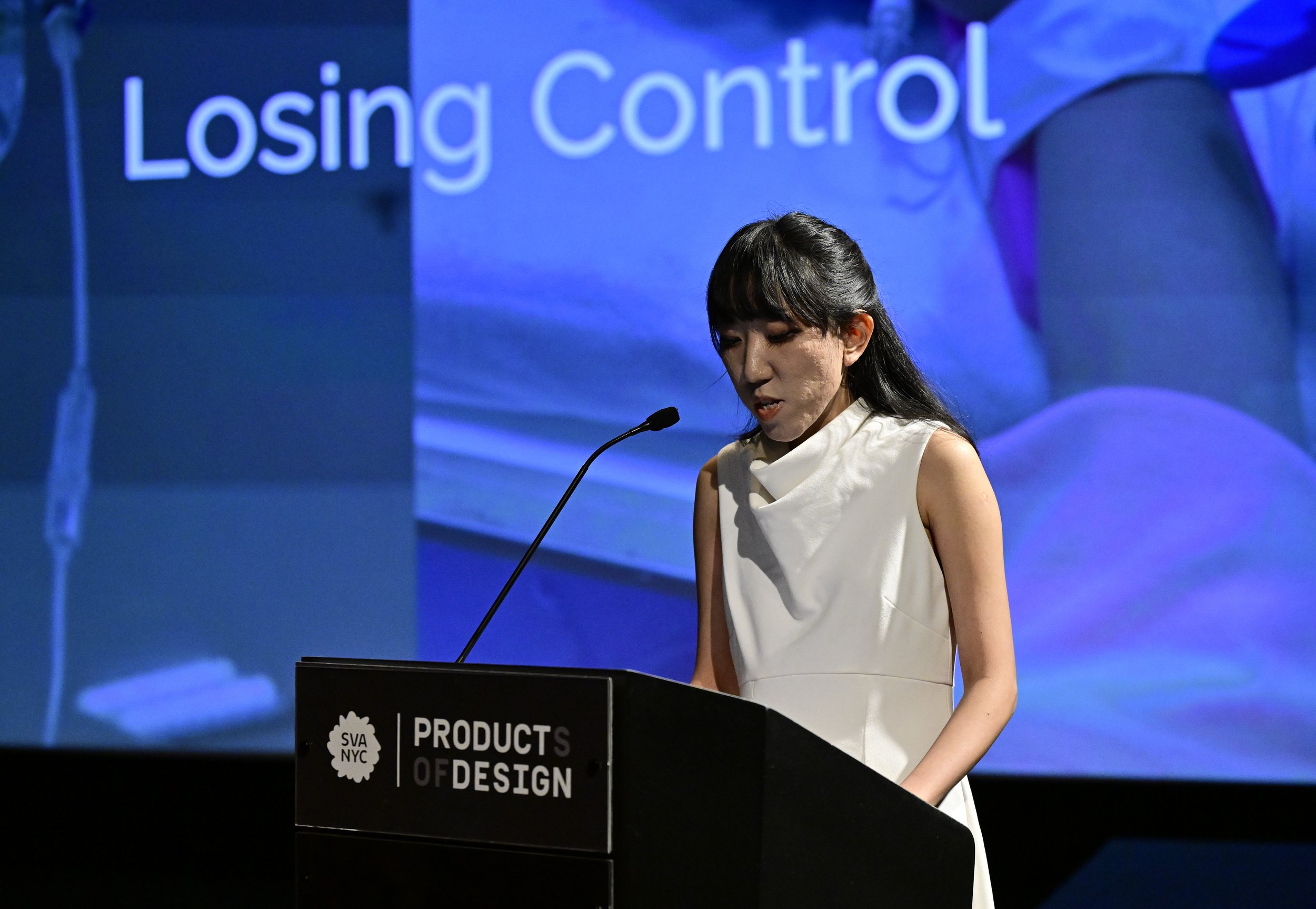
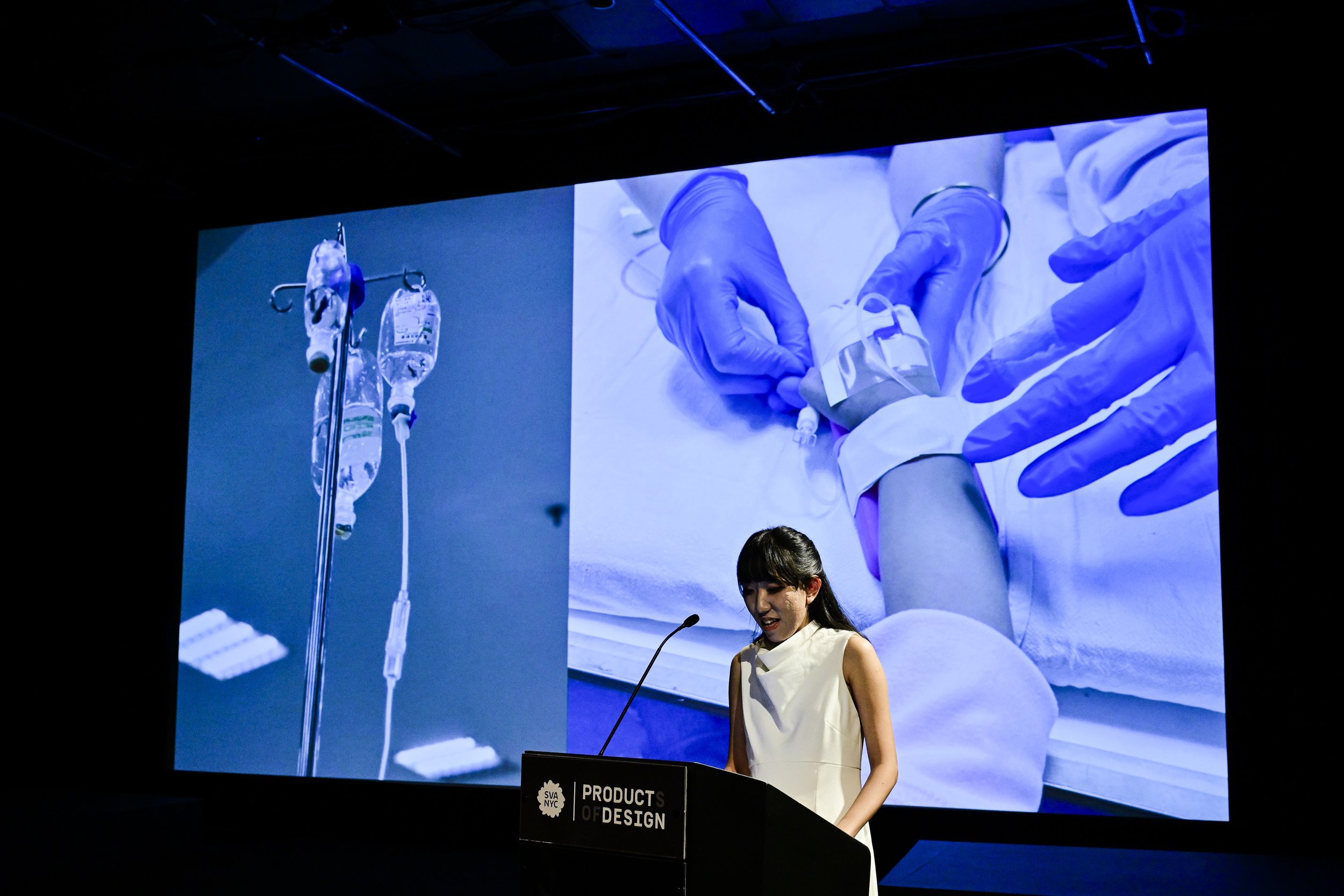
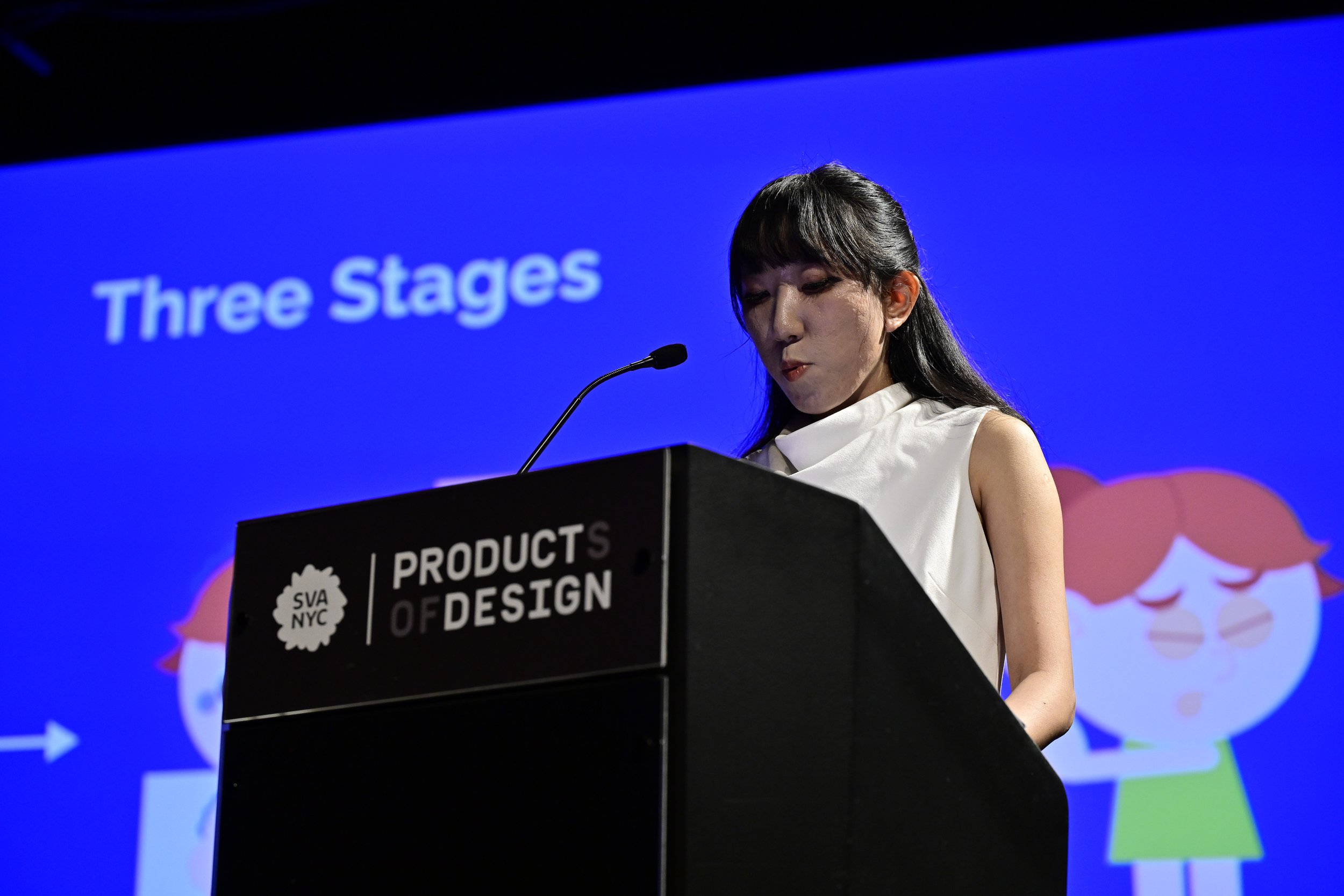

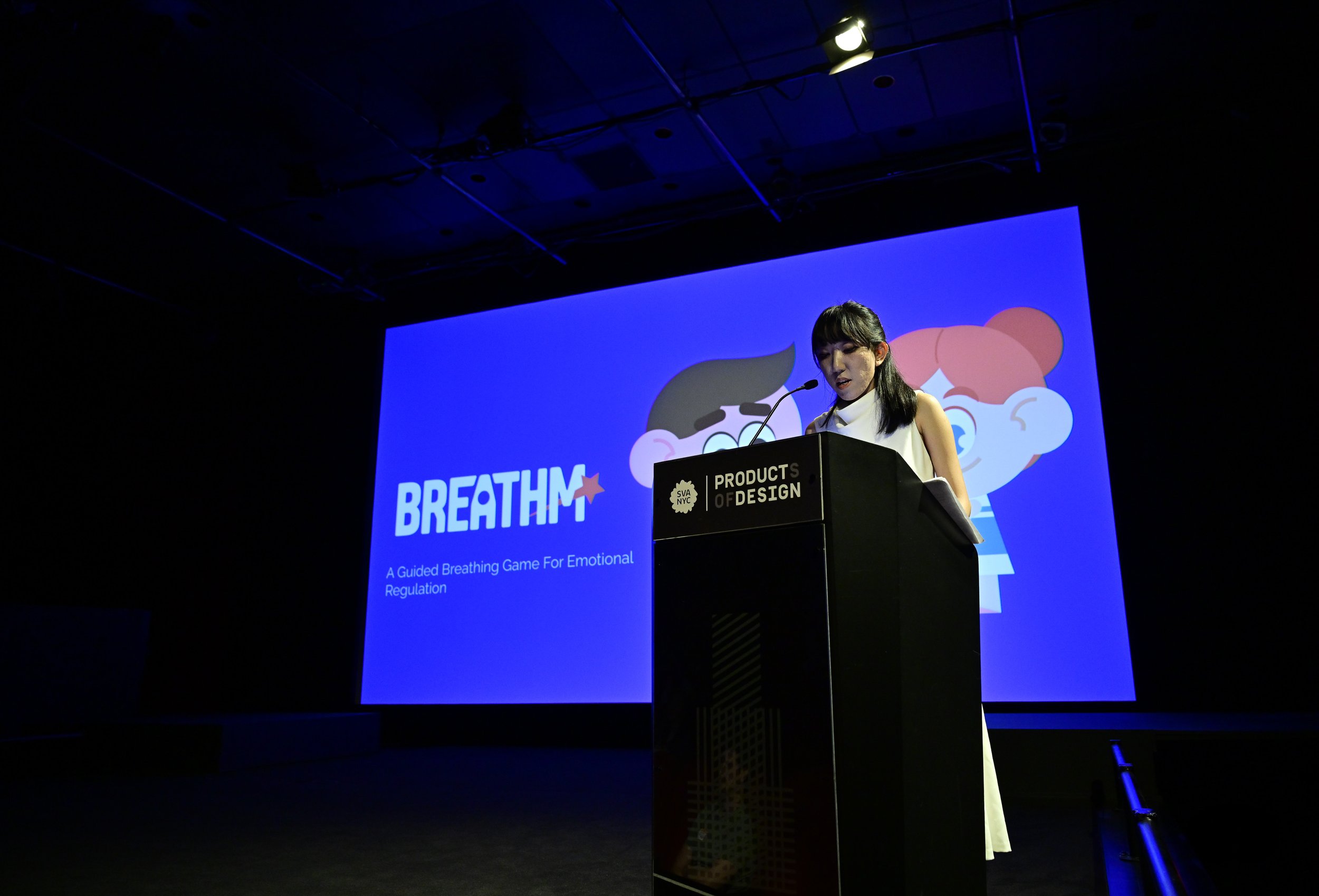
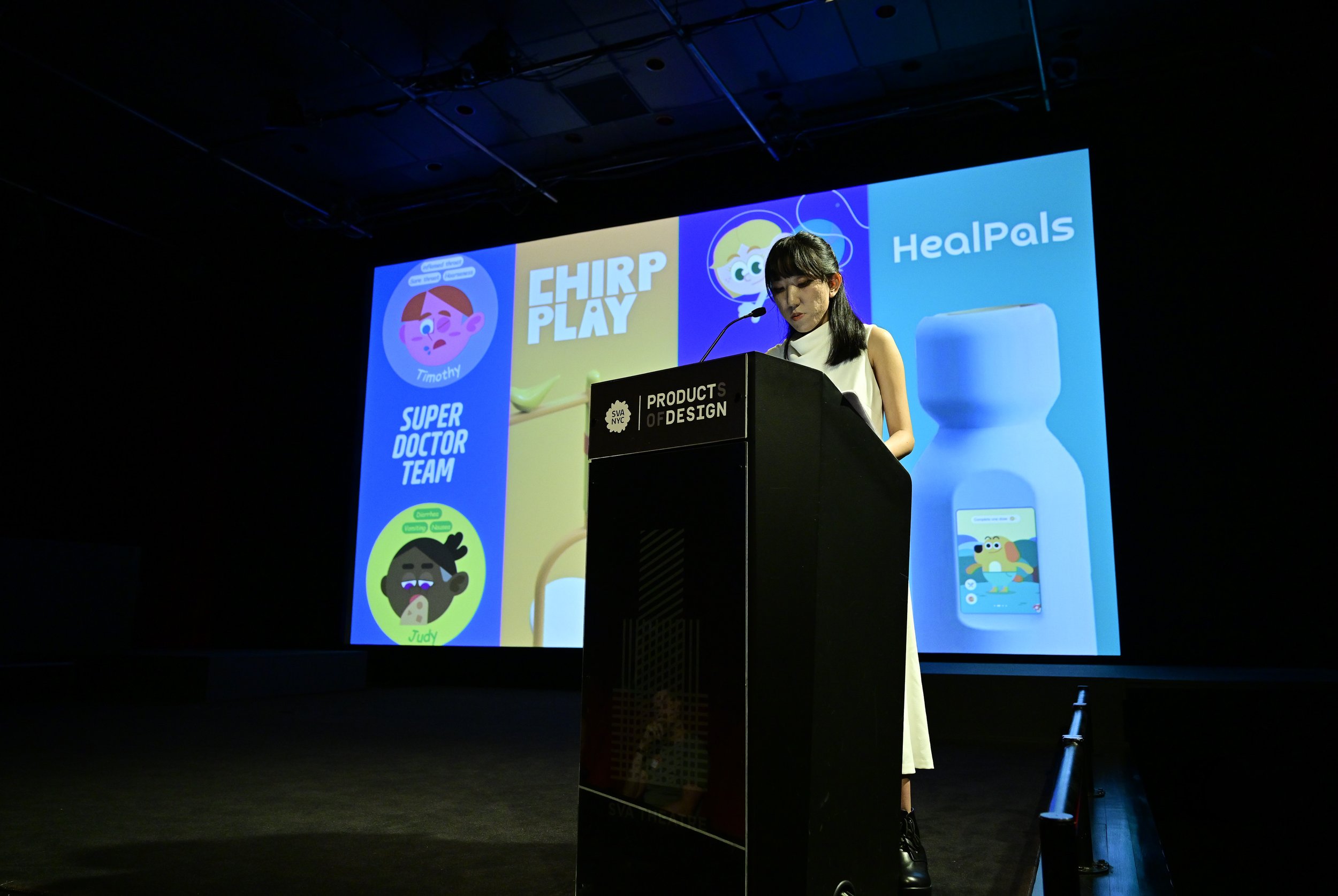


Through four design interventions, Jinny reimagines how children engage with medical care across three key moments: before, during, and after treatment. Each project combines play, empathy, and participatory design to reduce fear and foster emotional resilience.
Before Treatment: Super Doctor Team
Super Doctor Team is a storytelling and role-playing kit that transforms basic medical concepts into an imaginative, cooperative game. Children take on roles as doctors, nurses, pharmacists—even patients—using illustrated cards to make diagnoses and treatment plans.
“Before ever setting foot in a real hospital, they’ve already ‘played’ through the experience—with curiosity instead of fear.”
By stepping into the caregiver’s shoes, children build familiarity with tools, vocabulary, and hospital processes, reframing the clinical world as something they can understand and navigate. Before ever setting foot in a real hospital, they’ve already “played” through the experience—with curiosity instead of fear.
ChirpPlay: Practicing the Visit
ChirpPlay is a playful IV stand that transforms pediatric infusion into a moment of comfort, connection, and control. Designed for children receiving IV therapy, it reimagines the clinical process through subtle interaction and shared play.
At the top, a cheerful bird-shaped timer emits a soft “chirp” when the drip is done—offering a gentle, predictable signal that replaces uncertainty with understanding.
Below, a fold-out table creates a shared surface where children can draw, play, or talk—turning passive waiting into a social, emotionally supportive experience. “ChirpPlay doesn’t alter the medical procedure itself, but it reshapes the environment around it,” Jinny explains. “Children feel more engaged, less anxious, and more in control.'“
In a setting where emotional safety is often overlooked, ChirpPlay brings rhythm, grounding, and small moments of joy—one chirp at a time.
During Treatment: Breathm
Breathm is a breathing game that helps children stay calm during short but stressful medical procedures. Instead of simply being told to “take a deep breath,” children play their way through it—one breath at a time. As the game begins, a soft light or animated cue invites the child to inhale, hold, and exhale in rhythm. Each successful breath unlocks progress—like helping a balloon float or guiding a character through clouds.
These playful visuals turn breathwork into a small, achievable challenge. The game is short, soothing, and focused—designed to match the length of a shot or blood draw. It gives children something to focus on, something to “do,” and a sense of accomplishment at the end.
But Breathm isn’t just about distraction, Instead, it invites children to tap into their own breath as a tool for emotional regulation. By turning fear into gameplay, Breathm transforms anxiety into attention, and panic into presence.
It’s not just about breathing—it’s about feeling in control from the inside out.
After Treatment: HealPals
HealPals is a medication adherence system anchored by a virtual companion: a friendly, animated creature that “grows” as the child takes their medicine on time. Each successful dose unlocks new reactions, progress, and celebrations—transforming medication into a relationship rooted in care and mutual trust.
On the child’s side, it centers around a virtual animal companion—the “HealPal.” This pet grows, plays, and reacts when the child takes their medicine on time. Instead of presenting medication as a task, HealPals makes it part of an ongoing relationship, where consistency leads to meaningful rewards: emotional bonding, visual growth, and playful interaction.
On the caregiver’s side, HealPals offers a practical and empathetic toolset, including a customizable medicine dashboard where caregivers can input dosing schedules and medication names and real-time feedback when a dose is completed or missed. Unlike typical medication trackers that rely on alarms or charts, HealPals introduces emotional reciprocity as a core design principle.
This gentle and affirming approach helps children build medication habits through connection, not compliance. Rather than punishing forgetfulness, HealPals rewards consistency. “It also allows parents to stay involved without micromanaging,” Jinny explains. “this creates a dynamic where responsibility is shared, but autonomy is respected.”
Together, these design interventions reframe pediatric care as an emotionally intelligent process—one that honors children’s feelings and equips them with tools for understanding, coping, and healing. Jinny’s thesis challenges the clinical status quo, replacing silence and fear with participation, play, and trust.
For a deeper look into Jinny’s thesis process, research, and reflections, explore the following links:
Thesis Repository on Notion – a comprehensive archive of Jinny’s thesis development
Thesis Blogposts on Medium – extended reflections and insights





















